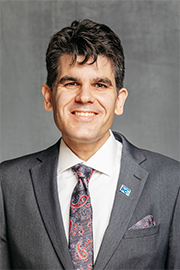- Feb/29/24 1:50:00 p.m.
Further debate? Further debate?
Is it the pleasure of the House that the motion carry? I heard a no.
All those in favour of the motion, please say “aye.”
All those opposed, please say “nay.”
In my opinion, the ayes have it.
Interjection: On division.
Motion agreed to.
- Hear!
- Rabble!
- Feb/29/24 2:00:00 p.m.
This petition is titled “To Raise Social Assistance Rates,” and it reads:
“To the Legislative Assembly of Ontario:
“Whereas Ontario’s social assistance rates are well below Canada’s official Market Basket Measure poverty line and far from adequate to cover the rising costs of food and rent: $733 for individuals on OW and $1,308 for ODSP;
“Whereas an open letter to the Premier and two cabinet ministers, signed by over 230 organizations, recommends that social assistance rates be doubled for both Ontario Works (OW) and the Ontario Disability Support Program (ODSP);
“Whereas small increases to ODSP have still left these citizens below the poverty line. Both they and those receiving the frozen OW rates are struggling to survive at this time of alarming inflation;
“Whereas the government of Canada recognized in its CERB program that a ‘basic income’ of $2,000 per month was the standard support required by individuals who lost their employment during the pandemic;
“We, the undersigned citizens of Ontario, petition the Legislative Assembly to double social assistance rates for OW and ODSP.”
I could not agree more. I will affix my signature to it and give it to page Anushga to bring to the table.
- Hear!
- Rabble!
- Feb/29/24 2:00:00 p.m.
I have a petition to the Legislative Assembly of Ontario.
“Whereas there is overwhelming evidence to show that paid sick days significantly reduce the spread of infectious disease, promote preventive health care and reduce health care system costs; and
“Whereas 60% of Ontario workers do not have access to paid sick days, and cannot afford to lose their pay if they are sick; and
“Whereas low-wage and precarious workers are the most likely to be denied paid sick days; and
“Whereas enabling workers to stay home when they are sick without losing pay helps limit the spread of illness in the workplace and allows workers to recover faster; and
“Whereas during an infectious disease emergency, it is unreasonable and dangerous to public health to make workers choose between protecting their communities and providing for their families; and
“Whereas legislating paid sick days through the Employment Standards Act, with transitional financial support for struggling small businesses, will ensure that workers have seamless, uninterrupted access to their pay;
“Therefore we, the undersigned, petition the Legislative Assembly of Ontario to immediately amend the Employment Standards Act to provide Ontario workers with 10 employer-paid days of personal emergency leave each year and additional paid sick leave in the case of an infectious disease emergency.”
I fully support this petition. I will affix my signature and send it to the table with page Mercy.
- Hear!
- Rabble!
- Feb/29/24 2:00:00 p.m.
- Re: Bill 162
I’ll be sharing my time today with the amazing and passionate member from Scarborough–Guildwood.
The Get It Done Act: What does this bill actually get done for the people of Ontario? Does it help the health care crisis? No, no mention of that. Fix the education system? Nope, no mention of that. Housing affordability? Nope, no mention of that, just promoting more sprawl. Address the climate crisis? Nope, it will actually make that one worse.
This bill would amend the Environmental Assessment Act to explicitly allow provincial and municipal governments to expropriate land before environmental approvals. The bill, however, offers few details about how wide-ranging these powers would be or how they would play out on the ground, and we all know the devil is in the details.
The environment minister won’t even directly answer questions about how she will make sure these changes won’t harm the environment—wow, the Minister of the Environment not sure about how she will prevent harm to the environment. She said the goal is to streamline the environment and assessment process, which has been historically been “slow and complex” with “too much red tape.” Well, if the minister is so interested in red tape reduction, I hear there’s an opening in that ministry.
Biodiversity is one of the most precious and important things we have. Maybe this government thinks it’s merely something that’s nice to look at and enjoy spending time in, but actually, it’s so much more. Without biodiversity, our entire support system for human as well as animal life would collapse. We rely on nature to provide us with food and clean water, for a lot of medicines and to prevent flooding and other extreme weather events.
So much is provided by the natural ecosystems around us. They are truly vital to life on earth. The government may think, “Okay, we can just trash one bit or remove a species, and it will all be okay.” But the different plants and animals are interconnected in vital ways that we don’t even always understand.
Biodiversity loss is at an all-time high: Southern Ontario alone has lost more than 70% of its wetland habitats, 98% of its grasslands and 80% of its forests. Over 200 plants and animal species are classified as at risk of becoming extinct in Ontario. We need to tirelessly work hard to preserve what we do have left, not pave over paradise. We can’t survive if we don’t have our ecosystem. That means our farmlands, our wetlands, our flood plains—the very things that would be impacted by this bill.
Might I add that while the government continues to ram through Highway 413 they directly have a highway that runs along the same corridor. The government could be bold and fiscally responsible by moving truck traffic onto Highway 407. This would solve freight congestion right now at a much lower cost and a vastly lower upfront cost, less than the $10 billion it would cost to build the environmentally disastrous Highway 413.
In 2022, the Premier himself even admitted it was a big mistake for the Progressive Conservatives to privatize Highway 407, so why not rectify that now and instead of promising to impose no tolls on highways that already have no tolls take some real action and allow trucks to use the 407 toll-free? I would say, “Kill two birds with one stone,” but I believe in preserving biodiversity and the lives of wildlife, unlike this government.
Just for the record, Highway 413 will raze 2,000 acres of farmland, cut across 85 waterways and pave over 400 acres of protected greenbelt land. It would also disrupt 220 wetlands and the habitats of 10 species at risk. The Bradford Bypass would cross 27 waterways and slash through environmentally sensitive Holland Marsh lands, impacting about 39 hectares of wildlife habitat and 11 hectares of wetlands. The government hears that and says, “Let’s do it,” instead of using an underutilized highway that is already built.
They love cancelling things. Just look at the 758 renewable energy projects they cancelled when they first took office. Why not cancel the tolls on trucks for the 407?
Yesterday there was a 20-degree jump in temperature in a matter of one day. The climate change is in front of our eyes. If this government plans to continue on this, the Get It Done Act is a misguided attempt that sacrifices long-term sustainability and social equity for short-term gain. We cannot afford to prioritize hasty development over thoughtful planning and responsible governance. We must focus on the well-being of our communities and the preservation of our environment.
- Hear!
- Rabble!
- Hear!
- Rabble!
- Feb/29/24 2:00:00 p.m.
I’m very proud to be submitting this petition to the House.
“To the Legislative Assembly of Ontario:
“Support Gender-Affirming Health Care.
“Whereas two-spirit, transgender, non-binary, gender-diverse, and intersex communities face significant challenges to accessing health care services that are friendly, competent, and affirming in Ontario;
“Whereas everyone deserves access to health care, and they shouldn’t have to fight for it, shouldn’t have to wait for it, and should never receive less care or support because of who they are;
“Whereas gender-affirming care is life-saving care;
“Therefore we, the undersigned, petition the Legislative Assembly of Ontario to support the reintroduction of a private member’s bill to create an inclusive and representative committee to advise the Ministry of Health on how to realize accessible and equitable access to and coverage for gender-affirming health care in Ontario.”
I’m very proud to sign this petition and send it to the centre table with page Isaac. And I look forward to the debate tonight.
- Hear!
- Rabble!
- Feb/29/24 2:00:00 p.m.
I bring this petition on behalf of Denise Dillon of Toronto. We are petitioning the Legislative Assembly to extend access to post-adoption birth information.
“Whereas current legislation does not provide access to post-adoption birth information (identifying information) to next of kin if an adult adopted person or a natural/birth parent is deceased;
“Whereas this barrier to accessing post-adoption birth information separates immediate family members and prohibits the children of deceased adopted people from gaining knowledge of their identity and possible Indigenous heritage;
“We, the undersigned, petition the Legislative Assembly of Ontario to extend access to post-adoption birth information ... to next of kin, and/or extended next of kin, if an adult adopted person or a natural/birth parent is deceased.”
I fully support this petition. I will sign it and pass it to page Max to deliver to the table.
Resuming the debate adjourned on February 29, 2024, on the motion for second reading of the following bill:
Bill 162, An Act to enact the Protecting Against Carbon Taxes Act, 2024 and amend various Acts / Projet de loi 162, Loi édictant la Loi de 2024 sur la protection contre les taxes sur le carbone et modifiant diverses lois.
- Hear!
- Rabble!
- Feb/29/24 2:10:00 p.m.
- Re: Bill 162
I am pleased to stand here and debate this government’s Get It Done Act, or, more accurately, let’s say the “get it not-so-done act,” because, as Ontarians know, actions speak louder than words. The members opposite say that this legislation will help build highways. That’s strange, because I read this bill up and down and there isn’t anything about building highways. As my colleague from Beaches–East York put it so well, all that’s in there is stripping environmental protections.
I came back from a tour of the north as a member of the Standing Committee on Finance and Economic Affairs. I learned a lot. The north is so beautiful, and the people are so warm and kind. Transportation-wise, I heard a lot about the importance of twinning highways up there. The highways up there are particularly dangerous, with only one lane per direction. That’s tight driving, especially in wintertime. There is not much room to manoeuvre, and accidents are far too common. When a lane is shut down, that’s the whole highway being shut down, and guess what? That is added pressure to their daily economic productivity.
I want to share with you the accidents that recently happened on Highway 69:
—a 65-year-old passed away in November after a collision on Highway 69, north of the Magnetawan River Bridge, which is an untwinned portion of the highway;
—a nonfatal crash in March on the same section; and
—two seniors died in a crash in February of 2022 in the untwinned portion south of Pointe au Baril;
On Highways 11 and 17:
—a pedestrian was killed by a pickup truck on untwinned Highway 17 two days ago in the Sault Ste. Marie area;
—a Thunder Bay woman was killed in untwinned Highway 17 crash with a commercial vehicle last month;
—two teens were killed on untwinned Highway 17 crash in October;
—one person is dead after a two-vehicle collision in the township of Calder on untwinned Highway 11 in July.
I could go on, because it’s not done, but I hope you get the point about why we’ve got an issue with this Get It Done Act. This government has slowed down the twinning of Highways 11, 17 and even Highway 69. Not one kilometre started under this government’s watch.
Everyone in the northeast wants to see Highway 69 twinned: the municipalities, the Sudbury and Timmins chambers of commerce, everyone. But this government legislation is a missed opportunity to actually focus on expanding these crucial highways and to follow through with this government’s commitments. But we’re not going to see shovels in the ground from this bill, only more empty promises.
Furthermore, this legislation is taking a proud stance against highway tolls. Here’s the problem: There is only one toll road in Ontario, and this bill won’t do anything about it. Highway 407 will continue to charge Ontarians an arm and a leg, especially during an affordability crisis—and this government is A-okay with that? But of course they are, because it was the Conservatives who privatized it in the first place.
The members opposite claim this legislation will prevent tolls on the Gardiner and Don Valley Parkway. That’s funny because only one person ever proposed tolling those roads: former Conservative leader John Tory. This is just another bill for this government where the only purpose is to reverse the Conservatives’ bad ideas, just like the greenbelt.
Ontarians deserve serious legislation to address serious problems, not these performative stunts. Everyone wants things to get done, so stop wasting crucial legislative time on bills like this and introduce bills to actually get the work done. Just because it’s in the name doesn’t mean it’s true.
- Hear!
- Rabble!
- Feb/29/24 2:10:00 p.m.
- Re: Bill 162
As you know, right now, the ridiculous proposal for Highway 413 is being considered by the federal government. They’re worried about the biodiversity loss with that highway, and as we know there are safer, healthier options. Definitely we need to drive. I drive my vehicle. I also ride my bike. I also take transit. I also walk. We want to get people out of cars as best we can. We are woefully behind in building transit in this province, in this country, and primarily there’s a holdup because of this government.
I will take no lessons on climate action from this government because you’ve been failing from the beginning, starting with the throne speech not having the words “climate change” in it. You’re allergic to those words. I know you break out in hives and you need a defibrillator whenever you hear them. But I will take no lessons from your lack of action and leaving people’s children and grandchildren, nieces and nephews at risk for the future because you can’t even say those words or do anything about it.
Where’s the action? Where is it? The world is waiting.
- Hear!
- Rabble!
- Feb/29/24 2:10:00 p.m.
- Re: Bill 162
Further debate?
I recognize the member for Hamilton West–Ancaster–Dundas.
Interjection.
- Hear!
- Rabble!
- Feb/29/24 2:10:00 p.m.
- Re: Bill 162
My question is for the member from Beaches–East York. This bill calls highways low-impact environmentally. Can you explain why highways are not low-impact to the climate?
- Hear!
- Rabble!
- Feb/29/24 2:10:00 p.m.
- Re: Bill 162
Are you debating? Okay. Sorry.
My question is for the member for Scarborough–Guildwood. Thank you for your speech today. This bill shows yet again that the only people in this province this government gets it done for are insiders, developers and donors, and they think the people of Ontario don’t see what they’re up to. So the fact that this bill is proposing to remove tolls on highways that don’t have tolls but not remove tolls on highways that do have tolls, like the 407—this is asinine.
My question to you is, do you think the people of Ontario are duped by this performative bill?
- Hear!
- Rabble!
- Feb/29/24 2:10:00 p.m.
- Re: Bill 162
The member from Scarborough–Guildwood brings up the twinning of Highway 69—an important issue; this government has done more than half of that—and also brings up several other highways because we regard twinning highways as important because people need to get from point A to point B. But what I’m confused about is that the member right next to her just says how it’s no good to build any highways throughout this province. So one member is saying, “Build the highways, expand the highways,” and the member right next door is saying, “Don’t build highways, don’t extend the networks.” So I’m trying to square this.
Speaker, the question back to either member is, which do you stand for: no highways or more highways?
- Hear!
- Rabble!
- Feb/29/24 2:20:00 p.m.
- Re: Bill 162
It might come as a surprise to many, but conservation authorities were first established by Conservatives generations ago in this province. I think a round of applause for them, right? Yes. Now, generations later, we’ve got this.
My question to either of you is simply this: What do you trust more: the results of an environmental assessment or the advice of a Tory Minister of the Environment?
- Hear!
- Rabble!
- Hear!
- Rabble!
- Feb/29/24 2:20:00 p.m.
- Re: Bill 162
The titles that come from this government are very inaccurate for what actions are really happening under the content of their legislation. I think back to when the government started, originally with the licence plates. That was a debacle. Then they went to ServiceOntario and they sole-sourced ServiceOntario to Staples. We’ll see how that debacle turns out, because nobody knew that was coming. Also renewing the permits on your plates; that was a debacle. People are driving with expired plates and being fined for that.
I want to ask the member: She talked about the 407. What would real change look like if this government took real responsibility and got it done and took the tolls off the 407 to make life more affordable for people driving every day to work in Toronto?
- Hear!
- Rabble!
- Feb/29/24 2:20:00 p.m.
- Re: Bill 162
I thank the speakers for their comments. Perhaps the member from Beaches–East York—first of all, I’m a little bit hurt. See, I thought that I was her favourite member. But anyway, I’ll get over it.
I want to talk about transit, because—and I’ve got a brother and sister-in-law that live in that riding, in your riding. They talk about transit all the time. This government is investing the most in transit in the history of the province, everywhere. In the city: 34 years, no transit built—we’re getting it done. Isn’t that something the member can support, and will it not have benefits for members in her riding?
- Hear!
- Rabble!
- Feb/29/24 2:20:00 p.m.
- Re: Bill 162
I want to thank both speakers for their comments. I’ll say this: Having worked in the municipality and having to come against some of the environmental assessment restrictions that do add costs that could otherwise be better spent on actual environmental remediation, do you see an opportunity nonetheless in improving the regulations that do exist so that we’re not spending far more without a resulting outcome, and we’re simply spending more on a project?
I think one of the most controversial projects that I had back in my former council ward in the town of Tecumseh was the construction of a multi-use path alongside Riverside Drive. That is an identified route for the Trans Canada Trail, the Great Lakes Waterfront Trail, and soon, hopefully, we will get some connectivity with the rest of the trail, once the gaps get filled in.
One of the most strenuous debates was with a couple of people who I know well. They’re really very partisan Liberal activists, but they did not approve of the use of the municipal class environmental assessment A+ schedule, which actually pre-authorizes multi-use trails. They thought the trail needed to have a more thorough investigation as to the impacts of public safety and security, health, environment—for example, will a 12-foot path have a significant amount of runoff that would cause flooding or give cause for flooding? This trail ended up being a debate for probably two and a half years, at which point, when it was finally done, the escalation and price that we’ve seen in construction increased the cost by about $1.5 million. Initially, it looked like it was coming in over budget. The federal government gave a grant, but then that was all eaten away and then some by just the consumer price index increases. Ultimately, we had the same result, but the way that—who could know? If we still had to go through a schedule B municipal class environmental assessment, that would have added a significant amount of time to getting this trail built and connecting to the great trails that we have in our glorious country.
And so, when I see opportunities to streamline the environmental assessment, do just like what the McGuinty government did and introduce schedule A prime, that’s a good thing—because there are certain projects that you will undertake in a municipality that are routine. They’re the same every single time.
I designed sewers and sewer systems. I designed bike paths. I didn’t design a building in full, but I administered the project. That particular project, I’ll get into a bit later, but do you know what? When I design a sewer, I submit to the MECP for my approval. It is a very set process. You know what the application is, you submit your drawings, you submit your sewer design sheets and you have certainty. The only thing you are uncertain about is the review timeline from the ministry.
Now, with recent changes, the linear assets evolution at the ministry, that’s actually left in the hands of the municipality. I see that as, again, a good thing. A professional engineer must stamp a drawing and a design. It doesn’t matter how long ago I did that design; I’m responsible if I fail in my job, in my duty as a professional engineer.
So when one approaches engineering design with a lens of skepticism, that we’re all unethical as engineers when we design—and unfortunately, I’ve heard that sort of suggestion in a couple of debates that we’ve had. I’ll say, number one, I want to serve the public as a professional engineer, and those who are involved with environmental assessments want to serve the public too. It doesn’t matter if you’re a land use planner—sometimes it’s a biologist—you take your knocks.
Going through the process, public consultation, is a key part of the environmental assessment process. You have to go through it. Schedule B: You’re required to do one project meeting and then you can create a project file at the tail end. Schedule C: You have to have a minimum of two public meetings and do a thorough report. Now, as a fail-safe, you want to do a whole report just in case there is a—it used to be a bump-up request that the minister used to deliver; now, again, that’s the decision of council.
At the end of the day, you do a biological assessment. You do an archaeological assessment. You do a storm water assessment. You do a traffic assessment. You spend a lot of money on studies to make sure that things are going right. It’s clockwork when you have a process that is set and established. You know what you need to do. So in the case of what the previous government did with schedule A-1, again, it’s a good thing. I support it. It means that what is routine and default should not result in unnecessary delays to achieving the societal good that your project would bring in.
Changes to the EA process to provide a wider breadth of scoped projects, ones where you know what you’re getting—a waste water treatment facility—you get newer technology, but, fundamentally, you can write out the design with a pen and paper. You know what the processes are for cleaning water. You know you have primary treatment. Ideally, you will have secondary treatment. In a perfect world, maybe we’d have tertiary treatment; that isn’t compulsory. But the secondary treatment is one where you can decide: Do you use light? Do you use ultraviolet? Do you use ozonation? Do you use membrane technology? It doesn’t matter. At the end of the day, there are only so many technologies out there and so many directions you can go down.
There are certainly opportunities to standardize a process, to introduce a quicker process and to ensure that you don’t run into unnecessary delays and barriers in trying to achieve public good. Cleaning water is a public good. Providing a bike lane is a public good. And yes, building a neighbourhood street, rebuilding a neighbourhood street—hereby called a “highway,” but the Highway Traffic Act includes all roads, including that 20-foot-wide lane. That’s what a highway is. It’s not a freeway.
So at the end of the day, there are plenty of great reasons for which to make the kinds of changes that are being proposed here. It’s not just for municipal infrastructure; it’s private infrastructure as well. It’s actually—I call it more stringent, because now you have geotechnical reports, whether it’s private or public or municipal, but they go through more intensive environmental site assessments. You have to prove that there’s no contamination on your property. Like, if your property was a gas station at one point, hey, you need to clean that soil. Again, it comes back to, as a designer, as a professional, you’re not doing your job and you are unethical if you don’t do your due diligence.
Now, adding the kind of—call it “public contact points” and all of what that entails—there’s merit to having public consultation, but sometimes that public consultation is repetitive. If you’re trying to improve storm water or add active transportation facilities and people don’t like it, well, you’re going to have some battles in front of you. And you know what? You can solve those projects on a political basis: Tell your city council not to fund it. But to actually encumber the process by politicizing it, effectively, instead of making it on a technical basis isn’t the best approach. It’s one of the flaws that we’ve had in our environmental assessment system. I’m happy to see the depoliticization and standardization of environmental assessments that are being called for in this legislation.
Not only did I serve as councillor, but I served as a designer in the municipality. I worked with contractors of many types. I’m representing the public good. In fact, I was the drainage superintendent as well. I was the regulator. I would say no. I had to impose the conditions of the Drainage Act. A lot of them are costly, and people push back. And you know what? Sometimes I’d agree with them. We were creating work for the sake of creating work. There’s no measurable benefit.
I think of a culvert installation on a property that’s on a drain that was established 120 years ago. If someone wants to move that culvert, they can’t just move the culvert and replace like with like. They actually have to go and do an entire drainage assessment of the whole drain—the entire length—to see what the impact is, even though the culvert next door is the same size on both sides so this particular culvert change is not going to change the flow. That’s where engineering judgment comes into play.
You need to be sensible with your decision-making, and sometimes the rules that we have imposed upon ourselves really detract from that. They add costs. They add time. And that cost that you’re wasting could be used for actual environmental remediation, actual environmental improvement, not just bringing process into it and having study after study when you know it’s not necessary or, worse yet, it has no bearing.
It’s a pretty cumbersome process to develop a property today. I think of the fire hall project that I went through. I know I’ve heard some concerns over the prospect of—call it weakening environmental regulation and, particularly, species at risk. The municipality can afford to wait—I worked for a municipality—and put in the time and money. So when all was said and done, a $5-million fire station project that I had that was delayed for two and a half years because of the efforts to get a beneficial-use-impairment permit and all that entailed—which was a three-to-one land compensation elsewhere and 10 years of monitoring on-site for snakes, the willowleaf aster and Butler’s garter snake, in addition to a number of construction techniques that were explicitly developed to ensure no harming of the snakes. This was after we had spent 30 days with a person on the site visibly pulling out every snake we could find to be able to relocate them to the offset site.
So in compiling the costs, it was a full million dollars and counting for the future monitoring added to the project cost. I look back at that—we only have so much we have in our household. We earn a paycheque; we try to provide for our kids, we try to take care of our parents, and we want to do the best that we can for them. When we’re diverting funds to engage in activity that really accomplishes no environmental improvement, to me that doesn’t feel like a win.
Having the standardization, as this is proposing, will set clear rules and clear compensation for the environmental impact in a standardized way. You know what you’re getting into. You spend the money to achieve that environmental improvement. It’s very definitive. This is something that is a way to not only reduce the cost, which we all would love to do so we can invest in other things, but it also significantly reduces the time spent on a project.
My very first project, which was dealing with basement flooding—and I mean sanitary basement flooding—was back in 2006. There’s a company called Amico Infrastructures that was the first contractor that I dealt with. Not too long ago, in learning about the government’s changes, the president of that company actually submitted some comments about this legislation. Dominic Amicone, the president of Amico, said: “Environmental assessment processes exist to recognize and protect the sometimes-delicate balance of the environments in which our clients build and operate. These new MECP initiatives will help manage the equally delicate balance of streamlining development while ensuring appropriate environmental protections. Amico supports policy innovations that facilitate near-term initiatives and long-term sustainability.”
Amico is an expert on this, because they were also a contractor on the fire station; they’re the contractor on the Gordie Howe International Bridge that had a significant amount of compensation involved. In fact, we have a whole linear network of trails that was put in by the previous government. I give them full credit; they spent a ton of money taking care of the natural environment in Windsor and LaSalle. If you go down Highway 401, on your way to the new bridge—you can’t access it yet because it’s not built yet, but the rest of the freeway has been there for about 10 years now—you will see the environmental compensation. You will see the wildlife crossings that they have brought in and all of the offsets that that project entailed. There are, again, ways to standardize this type of compensation, where you set the rules in advance and you ensure that you deliver excellent value all across the board. So I’m very happy to see that Amico—this was unsolicited by me—came out and showed some support for this.
Further, municipalities get the phone calls, just like we get phone calls as MPPs. The city council just wants to see some achievements for their time, too, and their investment. Why does it take two, three, four years to resurface a street? I’m exaggerating a little bit with this; the street rehabilitation is pre-approved, but a street expansion is not. If you have a schedule B or a schedule C process, you are going to be spending an inordinate amount of time trying to reach a conclusion that you generally know is already going to work. Ultimately, you do need some degree of public consultation, but there are times when you need public consultation—other routine projects—where it really does not add value.
I’ve actually hosted, as I’ve administered environmental assessments under the MCEA—six people attended over a three-hour period, and their only ask was, “How much will it cost me?” So when I see that Bill 162 proposes to address some of these obvious deficiencies that we know we have and that municipalities support—actually, we’ve got AMO who says, “Modernized environmental assessment processes are a critical enabler for housing, streamlining processes for municipalities to help them build infrastructure like roads, sewers, and water systems more quickly. The initiatives announced today take a risk-based approach to environmental management, removing red tape for straightforward municipal infrastructure projects and focusing resources where they are needed most. AMO looks forward to continuing to work with the ministry on implementation details.” That’s Colin Best, AMO president and regional councillor for Halton. I know Mr. Best has been quoted extensively as being an expert in these chambers, and so I hope that Mr. Best’s contributions to this carry the same weight that they did for some of his previous comments on other pieces of legislation.
I see I’m running out of time. I just have about a minute left, and I only touched a small part of this bill. There’s a lot more—I think of road tolls. The city of Windsor would like to have tolls on E.C. Row Expressway to toll for the county residents who use that road. Obviously it’s not a provincial highway but, look, there’s a prospect and discussion for road tolls, and the government is saying very definitively this should not be part of our future. A gas tax is an absolutely more efficient way to raise funds. There’s a whole lot of infrastructure and paperwork involved with road tolls. So if you’re looking at the best way to actually levy a charge on a driver, the gas tax has the least amount of costs and has the most amount of revenue that you can carry forward.
There are arguments in favour of tolls; don’t get me wrong, but if you’re looking to make life easier for Ontarians, this is not the way to go. Anyway, thank you very much, Speaker.
- Hear!
- Rabble!
- Feb/29/24 2:20:00 p.m.
- Re: Bill 162
To the member, thank you for that question. I’m going to state again that the toll on the 407 is very expensive. Ontarians are facing a massive affordability crisis, and removing those tolls is just going to better the families of Ontario. It’s going to put more money into the people of Ontario’s pockets. Open up the 407—it’s going to help with the gridlock—and get off of Highway 413.
- Hear!
- Rabble!
- Feb/29/24 2:20:00 p.m.
- Re: Bill 162
Of course, I always like questions from my favourite MPP across the way. Thank you for that.
Yes, I’m always for—I’m not going to say “efficiencies” because that word has been used—
Interjection: Hijacked.
The problem is I think people have lost faith in this government when they do things because they’re either just bulldozing in to do something and then reversing on it, or wasting people’s time. I do feel there is a chance to do that, but can this government do it? I don’t know.
Interjection: Mulroney.
- Hear!
- Rabble!














